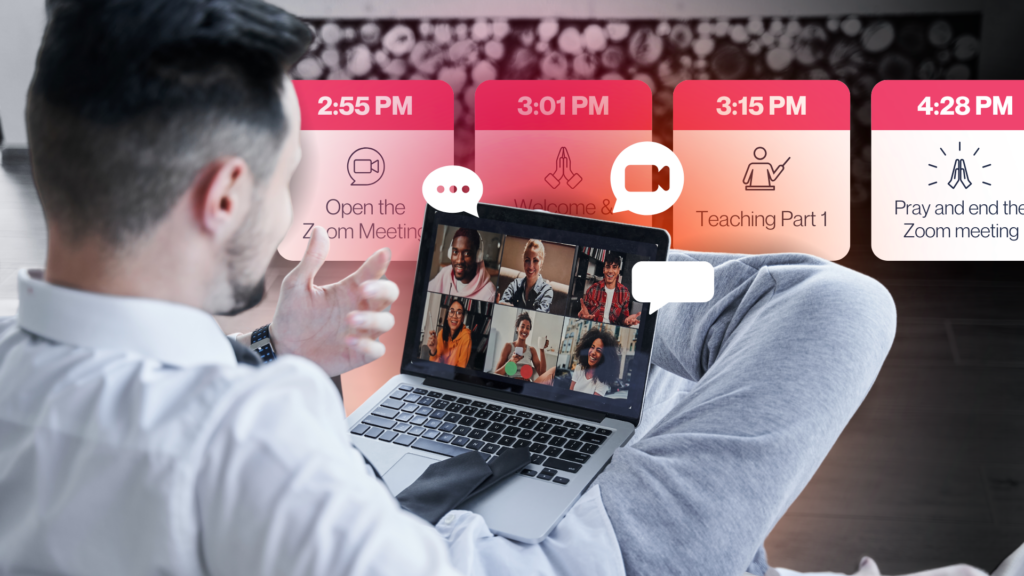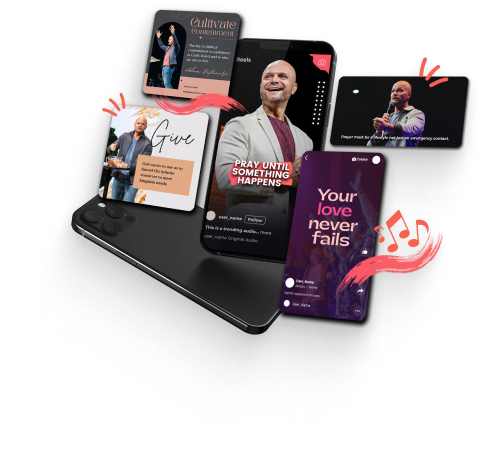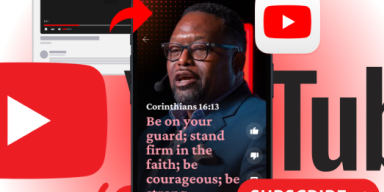I know many of you did Zoom during Covid. When Zoom comes to your mind, you may get a bad taste in your mouth. Yes, Zoom isn’t the option for everything, but it can be leveraged in strategic areas of your church or a specific ministry. I recently gave a lecture at a Christian university about digital ministry and how technology can be used to accomplish your objectives. I thought the eighteen-year-olds would automatically accept the idea, but to my surprise, many didn’t like using digital technology in the church.
The reason for the initial hesitancy?
They all had done high school on Zoom, and that sour taste lingered. I had to pitch that the goal of using digital technology at your church or a specific ministry isn’t to replace in-person ministry. I don’t think the in-person expression of your church is going anywhere, but not everything you do as a church has to happen in a room. Our churches should focus on producing spiritual fruit and not filling a room. Many students approached me afterward, letting me know they had changed their minds on this topic. By the end of this post, I hope you align with those students and see how digital and technology can accomplish your church’s objectives. Don’t ignore Zoom just because you had a few bad experiences. We can redeem the technology for kingdom goals.
I won’t explain these in detail, but here are seven high-level reasons why online groups via Zoom can be helpful for your church. I unpack these in my new book Online Church Is NOT The Answer: Beyond Just Streaming Church to Hybrid Disciple Making.
Why are Online Small Groups Helpful?
- Try before you buy mentality
- Great 2nd step
- Season of life
- Sickness
- Security issues
- No excuses
- This leads to more in-person groups
Now, flash forward to the best way to leverage the Zoom group format at your church. Maybe it’s for a quarterly training that moves to Zoom, a membership class offered a few times a year for those with a stricter schedule, or you launched online groups for people to get into a community that isn’t ready for connecting in person. There are many ways to leverage online groups, but that depends on your ministry’s methodology.
How do you offer Zoom groups right?
The worst thing you can do with Zoom is just jump on to teach for one hour via video. You need Zoom to be social. In an actual room, you can interact with others before the event starts and have side conversations during the event. On Zoom, only one person can talk. Crosstalk isn’t possible outside of the text-based chat. You must program social elements into your Zoom to improve the experience. I’ve led more Zoom training than I can count, but one learning has been with using Breakout Rooms on Zoom.
Sample Itinerary for a Zoom Event using Breakout Rooms
- 2:55 pm – Open the Zoom meeting
- 3:01 pm – Welcome & prayer
- 3:05 pm – Open a few breakout rooms on Zoom and explain that the goal is for you to turn on your camera, introduce yourself, and share your connection to the church/ministry. The goal here is just to get people to unmute and talk in their Breakout Room. As the leader of the Zoom, you can jump in and out of different Breakout Rooms to check on the conversions. I do this sometimes just to say hi to everyone.
- 3:13 pm – Close the Breakout Rooms, then explain you’re going to do the same rooms two more times during the event
- 3:15 pm – Teaching part 1
- 3:40 pm – Open the Breakout Rooms again for eight minutes to allow people to discuss what they learned. Provide a few discussion questions. Again, you can jump in and out of rooms as the leader.
- 3:48 pm – Close the Breakout Rooms, then start Teaching part 2
- 4:15 pm – Start one final Breakout Room to allow people to discuss any takeaways. Again, you can jump in and out of rooms as the leader.
- 4:20 pm – Closing thoughts, next steps, and maybe Q&A
- 4:28 pm – Pray and end the Zoom meeting
You can leverage Breakout Rooms in various ways, and different platforms have the same feature. I want you to understand that you must create circle experiences to make the online group format more dynamic. Don’t just start the Zoom, talk a bunch, and end the Zoom. That isn’t a great experience, but when you leverage Breakout Rooms to allow people to connect with others and teach, the online group experience can be positive.
You can get a detailed overview of how Zoom Breakout Rooms work in this video and learn about enabling the feature on your Zoom account here. I hope you consider using Zoom in some format at your church. Again, it doesn’t replace what you are doing but can enhance the experience in strategic areas if offered seasonally in some format. I can’t tell you where, but I believe most churches and ministries have many ways to leverage Zoom with Breakout Rooms that produce better spiritual fruit if correctly and strategically used.
Want to Learn More?
If you want to learn more about understanding and leveraging digital and technology at your church, consider buying my new book Online Church Is NOT The Answer: Beyond Just Streaming Church to Hybrid Disciple Making. I wrote the book so a pastor, staff member, or volunteer can go through it. Maybe go through this book with all of your volunteer leaders so you get everyone at your church thinking digitally in 2025.
Who is Jay Kranda?
Jay Kranda is the Online Community pastor at Saddleback Church. Jay graduated from Biola University, where he received a bachelor of arts degree in Christian education with a minor in biblical studies and a master’s in theology from Talbot School of Theology. Jay was hired as one of the first online pastors in 2010 and is now one of the longest-running online pastors in the world. With over a decade of experience of figuring out what online church connected to a local church strategy looks like for his church, he has helped tens of thousands of other churches with his website, ebooks, podcasts, articles, and conference talks. Jay oversees a weekly crowd of thousands that attend Saddleback Church’s online experiences, offers Zoom discipleship classes monthly, launches hundreds of online groups and in-person groups, and helps start house church expressions connected to their Online Community. Jay is married to his wife, Jody, and they live in Southern California with their three kids.





